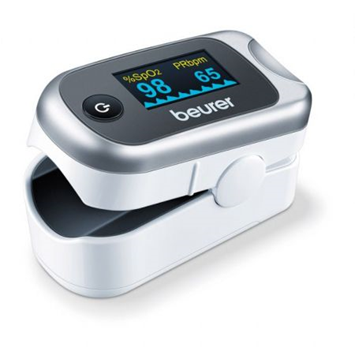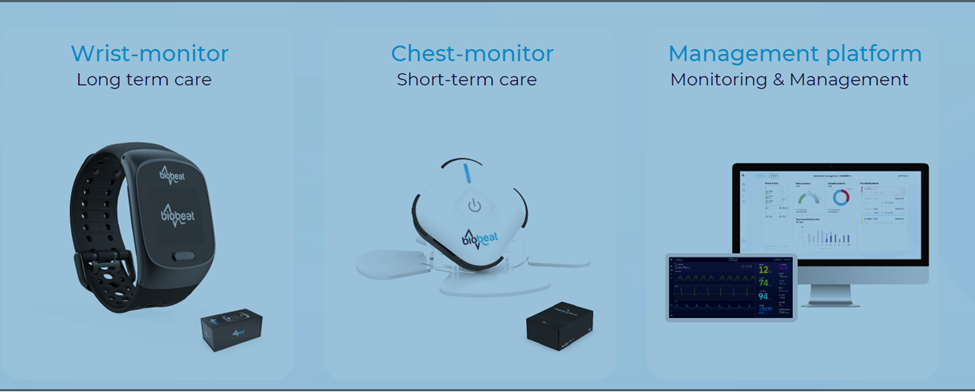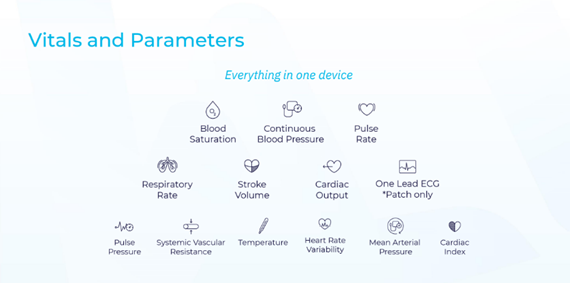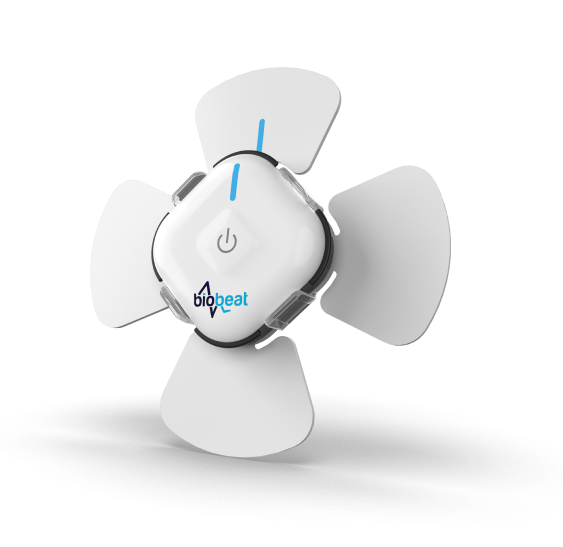- How has blood oxygen been traditionally measured?
- Introducing Blood Oxygen Saturation Monitors
- NextGen Blood Oxygen Saturation Monitoring
- Biobeat – on the pulse of innovation in blood oxygen saturation monitoring
- At-home monitoring of blood oxygen saturation
- So, what does it all mean for medical professionals?
- Conclusion

Blood Oxygen Saturation Monitor
Your blood oxygen level is the amount of oxygen carried by your body’s red blood cells. The ability to maintain the precise balance of oxygen-saturated blood is vital to ongoing good health. Problems with blood oxygen can indicate a variety of medical conditions such as hypoxemia, sleep apnea and chronic obstructive pulmonary disease (COPD).
How has blood oxygen been traditionally measured?
Up until recently, blood oxygen has been measured by means of an arterial blood gas (ABG), an invasive laboratory test. The test measures the acid-base balance (pH) and the levels of oxygen and carbon dioxide in the blood.
Steps involved in the blood gas test include:
1. Taking a blood sample. Blood is taken by a nurse or therapist from an artery inside the wrist known as the radial artery. Sometimes the sample is taken from an artery in the arm (brachial artery) or groin (femoral artery). Unfortunately, taking a blood sample from an artery is usually more painful than getting a sample from a vein. This is because arteries are deeper in your body than veins and are surrounded by nerves.
2. Lab work: The sample is then sent off to the lab for examination, which can take hours.
Introducing Blood Oxygen Saturation Monitors
With the advances of medical technology, blood oxygen saturation monitors have slowly begun to replace the cumbersome, time and resource intensive ABG test. Using an infrared light, the blood oxygen saturation monitor is usually placed on the patients finger and measures the amount of hemoglobin in the blood, and then automatically calculates how much oxygen it can carry.

Example of a blood oxygen saturation monitor
worn on the finger in a hospital setting.These
monitors are commonly attached to a cable
which may restrict the patients movement.
Here’s how it works:
First, the device sends out infrared light from a red LED light source. The wavelengths of this light are absorbed by hemoglobin and converted into electrical signals by a photodetector. The photodetector converts these signals into an analog voltage that is proportional to the amount of hemoglobin in the blood. This voltage is then converted into digital values using an analog-to-digital converter and processed by a microprocessor which calculates the percentage of oxygen saturation based on preset algorithms.
NextGen Blood Oxygen Saturation Monitoring
We can therefore conclude that blood oxygen saturation monitoring is a step up from the more traditional ABG test, but now, there is an even more innovative way to measure this data. One that enables continuous measurement of blood oxygen, not just for the duration of the test. And it’s all connected to Remote Patient Monitoring (RPM).
RPM is best described as:
“The real time digital capture and electronic transmission of vital health data from patient to healthcare provider, enabling continuous remote assessment, accurate data-based medical advice and instruction.”
Why is this revolutionary? Because RPM provides doctors with ‘eyes and ears’ once the patient leaves the healthcare facility, widening the continuum of care, mitigating risk, reducing adverse events, and empowering the patient to take more control of their health. This way, patients have peace of mind that they are still within the range of care of their doctors, and healthcare facilities can reduce repeat costly visits. Everybody wins.
Remote patient monitoring involves the specific use of a DEVICE for the ongoing real time interaction between providers and patients, remotely for reporting, collecting, transmission and evaluation of patent health data and vital sign data through electronic devices.
There are several RPM devices available today on the market and they are largely used today to monitor blood pressure, heart rate and of now, blood oxygen saturation levels.
The benefits of which, among others are:
- Patient and doctor ability to monitor key vital signs and symptoms as they improve/ deteriorate.
- Developing symptom monitoring such as cough, shortness of breath.
- Real time decision making of whether the patient should stay home or go to the hospital.
In short: Remote, sensor-based electronic blood oxygen saturation monitors do exactly the same thing that other monitors do but, as they are wireless, have the added benefit of monitoring without interfering with the patients’ routine and most importantly, capturing data all day long.
Biobeat – on the pulse of innovation in blood oxygen saturation monitoring
Biobeat, an Israeli MedTech company who are experts in the field of wearable remote monitoring, invented a variety of solutions for the monitoring from home of chronic conditions.

The solution is ideal for the following scenarios:
- Long-term care
Monitoring from home for the control of chronic conditions via a wrist monitor. - Short-term care
Monitoring (in hospitals) via a lightweight chest monitor. - Initial diagnosis
Monitoring for 24-hours to determine if the patient is suffering from high blood pressure (hypertension).
Each of the devices provide all the vitals required to monitor general health and blood pressure. The technology itself is based on reflective photoplethysmography (PPG), or a noninvasive optical method, which measures the heart rate, blood oxygen saturation, blood pressure, and several other cardio-pulmonary parameters.


At-home monitoring of blood oxygen saturation
Biobeat’s wireless, non-invasive, medical-grade wrist-worn device enables blood oxygen saturation monitoring by automatically capturing critical patient cardio-pulmonary health data throughout the day. Easy and intuitive to use, this next-gen, proprietary PPG-based sensor is designed to be set up at the patients’ home, without the need for the presence of medical personnel.
So, what does it all mean for medical professionals?
In essence, it’s a positive disruption in the constraints of traditional blood oxygen saturation monitoring. The patient’s systolic and diastolic blood pressure, blood oxygen saturation, heart rate, mean arterial pressure, cardiac output and systemic vascular resistance are all readily available, accurately measured, with reports that can be analyzed on-demand, from anywhere. Patients can access the information via a connected smartphone app, and doctors can tap into an online report via a web application.
Conclusion
Wearables such as Biobeat’s have strong implications for hospitals conducting remote patient monitoring, home healthcare platforms and General Practitioners. Patients enjoy a higher quality of life and peace of mind knowing their blood oxygen saturation levels are being continuously monitored, medical professionals get all the data they need, accurately and in real-time to help prevent life threatening events before they happen, and healthcare facilities… save a fortune in the resources required for hospital monitoring.
